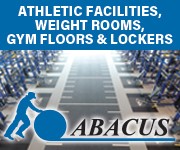Because flooring is typically the largest surface of any interior, the right floor covering can make a significant impact on the overall aesthetics, safety, and health of an educational space.
Designing for Aesthetics
The ultra-competitive higher education marketplace requires universities to create facilities that are inviting, engaging and memorable. Gone are the days of monochromatic classrooms with little thought towards a pleasing aesthetic. Today, classrooms, administrative offices, and other areas are being designed with virtually every material in consideration for how each can be combined and contribute to a more pleasing and enriching experience. From lighting and wall covering to seating and flooring, every interiors element must be designed with harmony in mind.
As universities keep one eye on the competition and one toward meeting the needs of its student and faculty population, they are also realizing the untapped power of their own brands. Utilizing its greatest asset – its own brand – universities have an opportunity to create a more emotional connection to all those that come in contact with the school across every part of the campus. Until recently, the incorporation of a school’s brand – its colors, logo, mascot – might have been relegated to an athletic facility only. Now, school colors and other elements of the brand are being used in design for multiple areas – from libraries and classrooms to learning labs and residences.
How a school’s brand and its colors are used is still dictated by the space itself and the overall design need of that space. For example, the flooring for a university’s hospitality environment, such as an alumni center or university-owned hotel, might contain bold patterns and large splashes of the school’s color to make a dramatic statement. In other settings, dramatic design statements might be down-played in a residence hall where a greater emphasis is needed on performance to stand up the constant wear and tear of that space. In this case, the school’s color might be used in subtle way as an accent color or for wayfinding.
Universities are also exploring the ways in which colors can serve more than just a functional purpose in the classroom, but actually influence learning. A study titled “Relationship Between Color and Emotion: A Study of College Students” revealed that green is associated with relaxation and calmness, while yellow can elicit energy and positive emotions. Knowing the role color can play in the advancement of learning should also be factored when designing a space.
Designing for Safety
The push for designing schools and universities with greater safety is not new. However, the amount of evidence-based research regarding safety continues to grow and evolve – especially about how a soft-surface flooring can contribute to greater safety.
Research from the National Floor Safety Institute (NFSI) shows that 55 percent of all trips, slips and falls are the result of the floor covering surface and that flooring materials contribute directly to more than two million fall injuries per year. But perhaps most important, data by professor Alan Hedge of Cornell University reveals that 46 percent of people who slip and fall on hard, shiny surfaces suffer injuries requiring medical attention, compared to 17 percent of people who fall on carpet.
The need to eliminate preventable trip, slip or fall incidents is important not only for the health and safety of those who might be at risk, but also for schools needing to mitigate increased costs associated with these incidents.
Designing for a safe environment is often thought of in terms of implementing easy entry/exit points, alarm systems and door or window locking mechanisms. But selecting the right flooring product is an additional safety element that should not be overlooked.
Independent studies confirm that carpet and a textile composite flooring, such as Kinetex, have a greater coefficient of friction rating than a hard surface such as vinyl. In fact, tests comparing surface traction of different floor coverings reveal that a wet, soapy, hard surface such as vinyl flooring can be more slippery than ice.
Soft surface floor coverings such as carpet and textile composite flooring feature a greater coefficient of friction rating, which can significantly reduce slips, trips or falls. This reduction can be increased even more when these soft surface flooring products are placed in areas where slips, trips and falls occur most frequently.
Designing for Health
A healthy indoor environment for students, faculty and staff is essential and can yield multiple benefits: less absenteeism, increased attendance and improved financial outcomes for the university. With a healthy interior, one free of indoor irritants, students and instructors will likely have greater concentration and increased performance.
A common misperception is that carpet can cause or increase asthma or allergy symptoms. Research, however, shows this is not the case. Allergen particles, such as dust, dirt and pollen, are heavy and drop to the floor. Carpet or a textile composite flooring – unlike a hard surface – traps and collects these particles, preventing them from circulating in the air. The particles are removed through regular vacuuming. Conversely, in a hard surface environment, data reveals that the particles are continuously distributed into the breathing zone when people walk across that surface.
Summation
Designing for aesthetics, safety and health should be an essential part of any campus or space planning consideration today. Fortunately, as supported by evidence-based research, the proper floor covering can greatly support and enhance these three critical elements.










